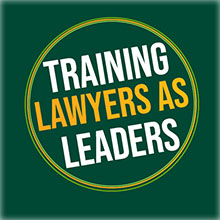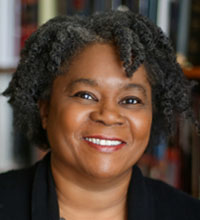| Princeton: | Say, Kate, can I ask you a question? |
| Kate Monster: | Sure! |
| Princeton: | Well, you know Trekkie Monster upstairs? |
| Kate Monster: | Uh huh. |
| Princeton: | Well, he’s Trekkie Monster, and you’re Kate Monster. |
| Kate Monster: | Right. |
| Princeton: | You’re both Monsters. |
| Kate Monster: | Yeah. |
| Princeton: | Are you two related? |
| Kate Monster: | What?! Princeton, I’m surprised at you! I find that racist! |
| Princeton: | Oh, well, I’m sorry! I was just asking! |
| Kate Monster: | Well, it’s a touchy subject. No, not all Monsters are related. What are you trying say, huh? That we all look the same to you? |
The dialog above sets up the song, Everyone’s a Little Bit Racist from the Broadway musical, “Avenue Q.” Beyond the catchy tune, the song acknowledges something we know is true: we all harbor biases about different people based on race, gender, ethnicity, sexual orientation, sexual identity, and a host of other categories like Southerner or Yankee.
With this post, we continue our focus on cultural intelligence, the challenge for the month of July. We noted in the first blog post on this challenge that developing cultural intelligence involves five steps. With this post, we discuss the third step, addressing implicit bias. We challenge you to address the implicit bias you may have learned along the way.
As the song from Avenue Q notes, bigotry has never been exclusively white; we all harbor biases, some overt biases and some implicit or unconscious biases because we are human. Experts believe that implicit biases are the result of adaptive behavior, the need to “function at maximum capacity by finding patterns among information or events or groups of individuals as a way of enabling us to make decisions without really thinking about it” according to Dr. Kierra S. Barnett, a post-doctoral researcher at the Kirwan Institute. Dr. Michelle van Ryan, a professor at the Oregon Health and Science University School of Nursing notes that, “[I]mplicit biases are basically this [learning] system applying whatever information [the system has] learned, even if it’s negative and inaccurate, to whole groups of people.”
That an individual harbors biases doesn’t make him or her a bad person, unless, that individual refuses to acknowledge their own biases or acts out of those biases in ways that cause tangible harm to the people with whom they interact or the organizations with which they work. Plenty of studies in the health care field document the effects implicit bias can have on patient care. For examples, see here and here.
But the impact of implicit bias is not limited to health care. Marianne Bertrand and Sendhil Mullainathan conducted a field study to answer the question, “Are Emily and Greg more employable than Lakisha and Jamal?” Bertrand and Mullainathan discovered, using fictitious resumes to respond to help-wanted ads in Chicago and Boston, that having a name associated with African Americans (like Jamal and Lakisha) resulted in significantly fewer callbacks for interviews than those candidates assumed to be white because of names like Emily and Greg, even though the credentials were the same.
We in the legal field are not immune to unconscious bias. Researchers from the leadership consulting firm Nextion submitted a legal memo drafted by five law firm partners from different firms to some 53 other partners at 22 law firms who agreed to participate in a writing analysis study, in which they would evaluate the submitted memo. All evaluators were told the memo was written by Thomas Meyer, a third-year associate who was a graduate of NYU Law School. However, approximately half of the evaluators were told the hypothetical Thomas Meyer was black; the other half were told he was white. The average evaluation of the memo by the white Thomas Meyer scored almost a full point higher than that of the black Thomas Meyer, 4.1 versus 3.2. The Nextion researchers were clever; they intentionally inserted 22 errors into the memo. The evaluators of the black Thomas Meyer were more likely to find those errors than the evaluators of the white Thomas Meyer.
We urge you to consider your own biases, particularly your implicit biases. If you have not taken one of the implicit attitude tests that are part of a Harvard study and meant to disclose unconscious biases, I urge you to take one here. We acknowledge that the Harvard has its detractors, but that the IAT may be flawed is not evidence that implicit bias doesn’t exist. Rather, measuring it may be difficult.
Finally, I encourage you to review at least the executive summary of the ABA study, You Can’t Change What You Can’t See: Interrupting Racial & Gender Bias in the Legal Profession. It outlines four patterns of bias in the legal profession: 1) prove-it-again bias; 2) tightrope bias; 3) maternal wall bias; and 4) tug of war bias. Consider whether you, or your firm or organization, may have unwittingly slipped into these patterns. Implicit biases are difficult to change, but we can start by acknowledging them.




